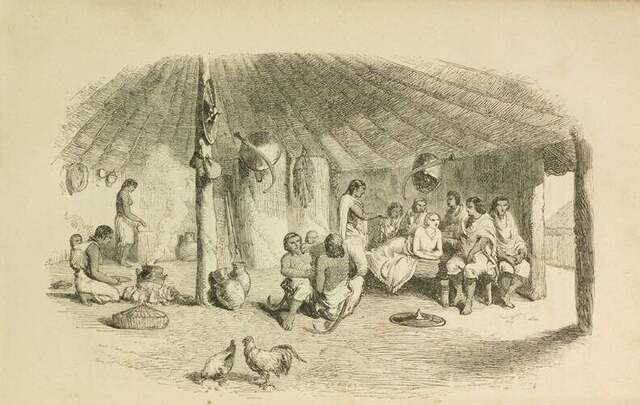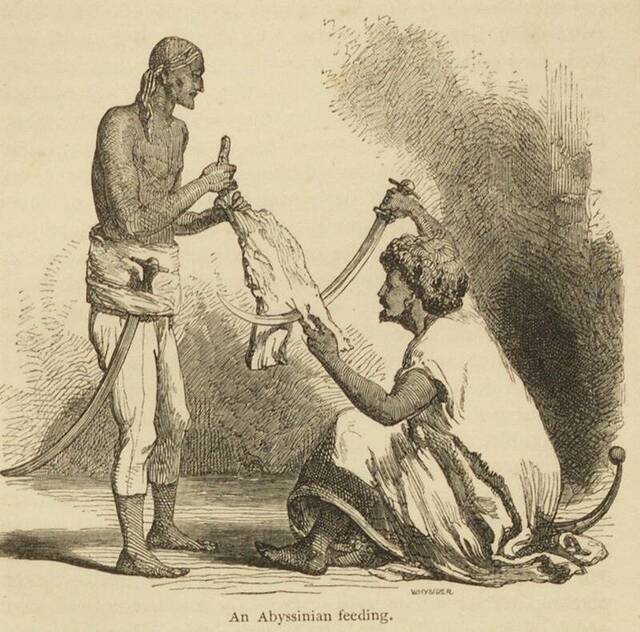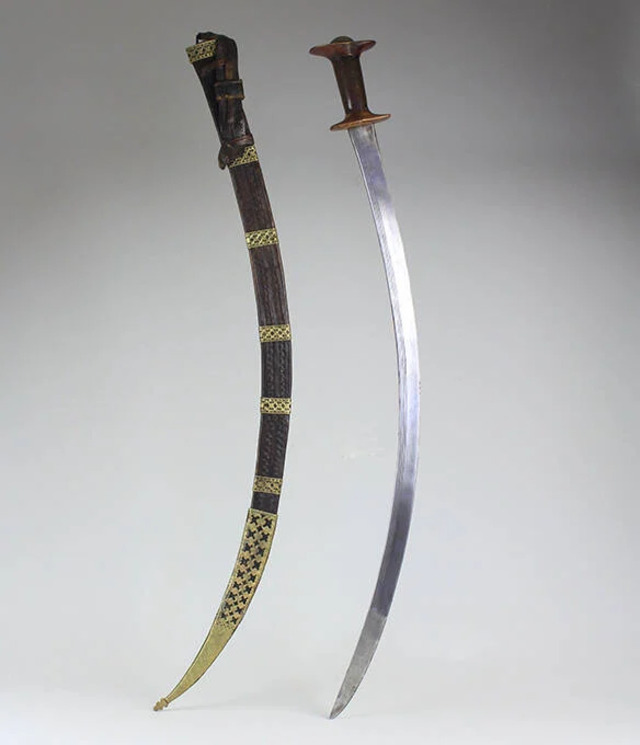The shotel, a curved and double-edged sword, stands as one of the most iconic weapons in African history. Originating in Ethiopia and surrounding regions, the shotel was a symbol of power, strength, and military prowess for centuries. This remarkable weapon, which first appeared during the ancient Dʿmt civilization, evolved to play a crucial role in warfare, especially during the 14th century under the reign of Emperor Amda Seyon I. Over time, it transformed from a battlefield necessity to a symbol of status and cultural pride in Ethiopia. Today, the shotel remains an important part of Ethiopian heritage, serving as both a reminder of the past and a symbol of resilience and tradition.
The Origins of the Shotel Sword
The shotel’s history dates back as early as 980 B.C.E., when it emerged in the ancient kingdom of Dʿmt, which encompassed parts of modern-day Eritrea and northern Ethiopia. This early use of the shotel sword demonstrated its significance in the region long before it became famous in later centuries. The weapon was double-edged, curved, and typically measured around 40 inches in length. Unlike other swords, the shotel was relatively simple in design, with a small handle often made from wood or rhino horns. While the sword was not heavily decorated, it was highly effective in battle.
The curve of the shotel allowed for a unique fighting style, enabling the wielder to use sweeping, hooking motions to strike their opponent, often targeting vital areas such as the kidney or lungs. Warriors used the sword with remarkable skill, and it became synonymous with the elite military forces of Ethiopia.
The Rise of the Shotel as a Symbol of Military Power

The shotel’s role as a weapon of war reached its zenith in the 14th century during the reign of Emperor Amda Seyon I. Under his leadership, Ethiopia experienced significant territorial expansion, and the shotel became a key instrument in these military campaigns. Amda Seyon I established the elite group known as the Axurarat Shotelai, a unit of warriors specifically trained to wield the shotel in battle.
The shotel was not merely a weapon; it was a symbol of power. It was the weapon of choice for the most skilled and dangerous fighters in the Ethiopian military. The design of the shotel allowed soldiers to attack from difficult angles, making it nearly impossible for an enemy to block the weapon. It could even reach around shields and was often used to strike directly down upon an adversary’s head.
Video
Watch the video to explore the history of the deadly shotel weapon! Don’t miss this in-depth look at its use and significance in ancient warfare.
The Wielders of the Shotel: The Meshenitai and the Axurarat Shotelai
As the centuries passed, the shotel became a weapon used primarily by the elite forces of Ethiopia. Early on, the sword was wielded by both infantry and cavalry warriors. These skilled fighters, known as meshenitai, were extensively trained in the art of using the shotel effectively. Their training and expertise in combat with the sword made them formidable opponents on the battlefield.
The peak of the shotel’s military use came during the 14th century under Amda Seyon I. His army, especially the Axurarat Shotelai, was instrumental in securing victories against neighboring territories. These elite warriors were essential in spreading both the influence and the culture of Ethiopia across the region. The skill required to wield the heavy, curved shotel was immense, and those who wielded it were considered among the finest fighters in Africa.

The Decline of the Shotel in the Face of European Contact
As European explorers began to make contact with Ethiopia in the late 15th century, the use of the shotel gradually began to decline. The first European visitors were not particularly impressed by the shotel, viewing it as an outdated and impractical weapon. One European even mocked the shotel, suggesting that it was unsuitable for a race of swordsmen. This criticism, along with the increasing presence of European-style firearms, led to the shotel becoming less prominent in military engagements.
By the 16th century, as European influence grew in the region, the shotel was slowly phased out of practical use. Instead, it became a symbol of Ethiopia’s noble past. It continued to hold cultural significance, however, and its association with strength and status remained intact.
The Shotel as a Symbol of Status

Though the shotel was no longer seen as an essential weapon of war, its cultural significance did not diminish. The sword evolved from a battlefield tool into a symbol of status and prestige among the Ethiopian elite. Larger, more ornate shotels became prized possessions, often serving as a way to denote one’s importance within Ethiopian society.
In this new role, the shotel was used in ceremonial settings and as a part of the regalia of Ethiopian nobility. The size and decoration of a shotel could convey the strength, wealth, and influence of its owner, making it an important item of personal prestige. The sword became a visual representation of power, and it was no longer used for its original, practical purpose in battle but rather as an emblem of the wearer’s status.
The Transition to New Weapons: The Gurade Sword

By the 19th century, the shotel was largely replaced in Ethiopia by new types of swords, particularly the Gurade, which was influenced by European sabers. The Gurade, with its single-edged blade, became the new standard in Ethiopian warfare. It was lighter, more versatile, and better suited to modern combat tactics. Many Gurade swords even featured blades produced in Europe, reflecting the increasing influence of European designs on Ethiopian weaponry.
The decline of the shotel as a military weapon marked the end of an era. The sword, which had once been synonymous with Ethiopia’s military prowess, was relegated to museums and historical collections, serving as a reminder of a bygone age of fierce warriors and legendary battles.
The Legacy of the Shotel
Today, the shotel remains one of the most iconic symbols of Ethiopian history. Although it is no longer used in battle, it continues to hold cultural significance in Ethiopia and beyond. The sword represents an era of military dominance and national pride, and it is a testament to the skills and courage of the warriors who wielded it.
The shotel’s legacy endures through its historical importance and its symbolic value. It serves as a reminder of Ethiopia’s rich history, where warriors fought valiantly with weapons that were both functional and emblematic of their strength. The shotel is not just a relic of the past; it is an enduring symbol of Ethiopia’s military heritage and its influence on the wider African continent.
Video
Watch the video to explore ancient weapons from different countries! Don’t miss this fascinating look at the diverse weaponry used throughout history.
Conclusion: The Shotel as a Historical Icon
The story of the shotel is a fascinating journey through time, from its beginnings in the Dʿmt civilization to its use in the military campaigns of Amda Seyon I and its eventual transition into a status symbol. Though its practical use in battle may have ended centuries ago, the shotel remains one of the most recognizable weapons in African history.
As a symbol of Ethiopia’s rich cultural and military heritage, the shotel continues to captivate historians and enthusiasts alike. Its legacy as a powerful weapon and cultural icon serves as a testament to the enduring strength and resilience of the Ethiopian people. The shotel’s place in history is firmly established, and its influence will continue to resonate for generations to come.



